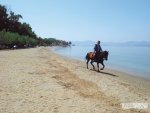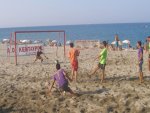See below for helpful tips for climbing :
The first 30 minutes walk slowly to allow the body to warm up gradually.
Every 60 minutes should rest and eat a little ( cookies , chocolate , etc. ) . During the rest to always wear blouse or jacket not cool .
Drink fluids as often done in small quantities.
When we walk not kick or throw stones to not injure climbers do not see any .
We walk through the paths when and where there are , on the one hand not to destroy the flora of the region and also to be sure that we are on the right path .
Two days before departure cut toenails us .
Over 2500 - 3000 measures must not increase the altitude will stay overnight more than 300 in 24 hours . If you can not be asleep at the highest point we reached during the 24 hours .
At the end of the course must necessarily do stretching exercises and where can a warm bath .
As the wind pushes the snow on a slope or frame is always created on the leeward side of a ridge . If the blade is loose , there is usually no problem , but if it has a smooth side and the opposite slope steep, pay close attention as the line rate of the
frame can be farther from the visible edge of the ridge . Can actually walk literally in
the air . Even more attention is , in case of fog .
MOUNTAIN EQUIPMENT
The equipment below is indicative and refers to all the seasons of the year , focusing on
winter ascents . Of course it is up to each hiker - climber chooses which of the below -
mentioned equipment is necessary , depending on the season , weather and night .
One-day Routes
- Backpack 30 - 40 lt ( with straps and belt )
- Flashlight with spare batteries and bulbs
- Individual pharmacy
- Whistle
- Knife
- Sunglasses
- Spare Laces
- Ax with hoods
- Crampons and caps
- Climbing Sticks
- High boots slight
- woolen Socks
- Wool or fleece pants
- Spare underwear
- waterproof Jackets
- Wool or fleece gloves
- Cowls gloves









